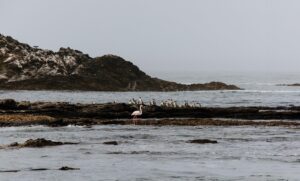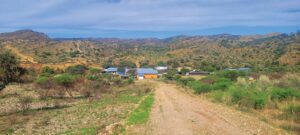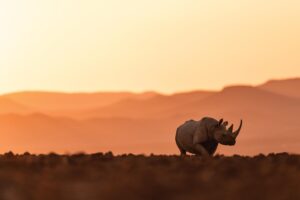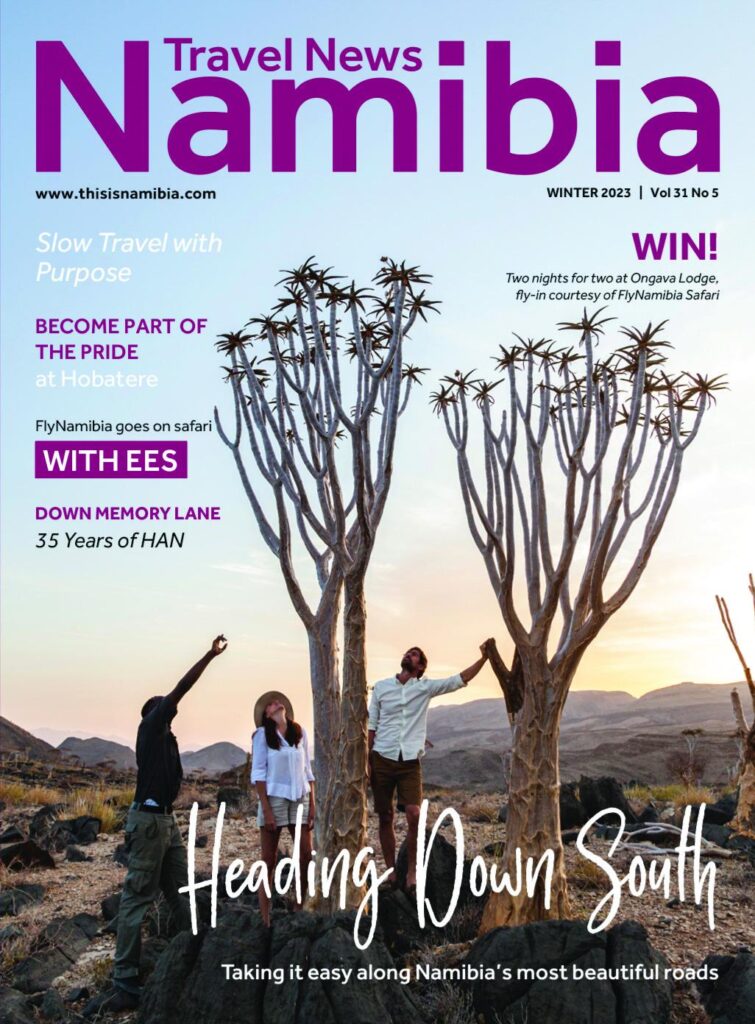

The art of
taking it easy
Exploring some of Namibia's most scenic roads
The saying goes that of all the roads you travel, make sure that some of them are dirt. Only, around here, most of the roads are. Deep in the south of Namibia, gravel roads and jeep tracks run like veins through the desert landscape. These roads connect destinations like Sesriem to Lüderitz or the Fish River Canyon. They are often looked upon as a means to an end instead of being part of the journey.
Text Le Roux van Schalkwyk | Photographs Le Roux van Schalkwyk
From the Winter 2023 issue
Let’s start with the road rumoured to be the most picturesque of all the scenic drives in the country. The D707 begins at an inconspicuous turnoff, regardless of which direction you take it from. At the northern end, the undistinguished turnoff forms part of the farmyard of Spes Bona, a classic farmhouse of Namibia’s south. Unremarkable as the scenery seems at first, the pastel blue and purple mountains gradually give way to large swathes of land. The road cuts a line through the desert with the massive red dunes to the west and the towering peaks of the Tiras Mountains to the east. In between, plains sparsely dotted with gemsbok, ostrich and springbok.
The odds are, if you have chosen to take this scenic route, and rented a self-drive to spend serious time off the beaten track, the philosophy of slow travel should come on autopilot. And that is precisely the default setting that ought to be selected once you hit the gravel of the D707.
Embrace the art of doing nothing: Part of the joy of slow travel is taking the time to simply be in a place. Find a place where you can see a long stretch of the road. Stop the car, find a comfortable spot to sit, pour coffee from your flask and watch the world go by. An added bonus is seeing another car slowly making its way along the seemingly endless road.
At its southern end, the D707 comes to a grinding halt at the T-section with the C13 to Aus.
Commencing from the one-street town that is Helmeringhausen, the stretch of C13 that winds its way to Aus should also not be rushed. Slow down your transportation: If you are in a rental car, chances are there’s a blood-curdling alarm that goes off if you exceed the speed limit. Use that to your advantage! Driving slower is safer and gives you more time to look around.
As you pass the sign welcoming you to the Lüderitz District when heading south, the most scenic part of the drive unfolds before you. From higher ground, a sweeping stretch of road curves gracefully to the right, revealing a breathtaking vista in the far distance as the road begins to ascend once more.
Make sure to stop at the unusual Tower of Tiras. The odd- looking tower on the Neiseb farm was designed and built by Siegfried Schnebel, a former maths and science teacher. It is a wind pump seemingly made from scrap iron, intended to provide water for fruit orchards and livestock fields. The tower was supposed to use canvas rather than solid metal blades, apparently to handle strong winds better. Though never used, the contraption remains an impressive feat of engineering and a good reason to stop and look.
Instead of the C13, heading south from Helmeringhausen the C14 is the better option when travelling to the Fish River Canyon. Passing through the historical village of Bethanie and ending at Goageb, a former railroad station turned into a ghost town, the C14 will take you to the B4 tar road.
About 20 km from Helmeringhausen the road crosses the Konkiep River and continues alongside the dry riverbed all the way to Goageb. Unlike the other two roads that are known for their vast plains, this route highlights the beauty of undulating hills. Although not as well-known, the scenic vistas to be had from this road are captivating in their own right.
Don’t be rushed, connect with people: While this area is sparsely populated, the quirky settlement of Helmeringhausen with its hotel and shop or the little town of Bethanie with its old churches and friendly inhabitants, offer great opportunities to talk with locals and learn about their way of life. Strike up conversations to find out more about these settlements or why people choose to stay here. You might just be surprised by what you hear and even get the lowdown on a sight to visit that is not on a tourist map.
Namibia is meant for slow travel. Take your time to appreciate the stunning landscapes, unique flora and fauna, and the rich culture of the country. Instead of only visiting the typical tourist attractions, try venturing off the beaten track and exploring some of Namibia’s lesser-known areas. This will give you a chance to experience the country’s unique culture and connect with the locals in a more genuine way.
Don’t let the rush of everyday life follow you on your holiday. Slow down and take in the breathtaking scenery of Namibia’s south by allowing yourself ample time to explore. TNN






